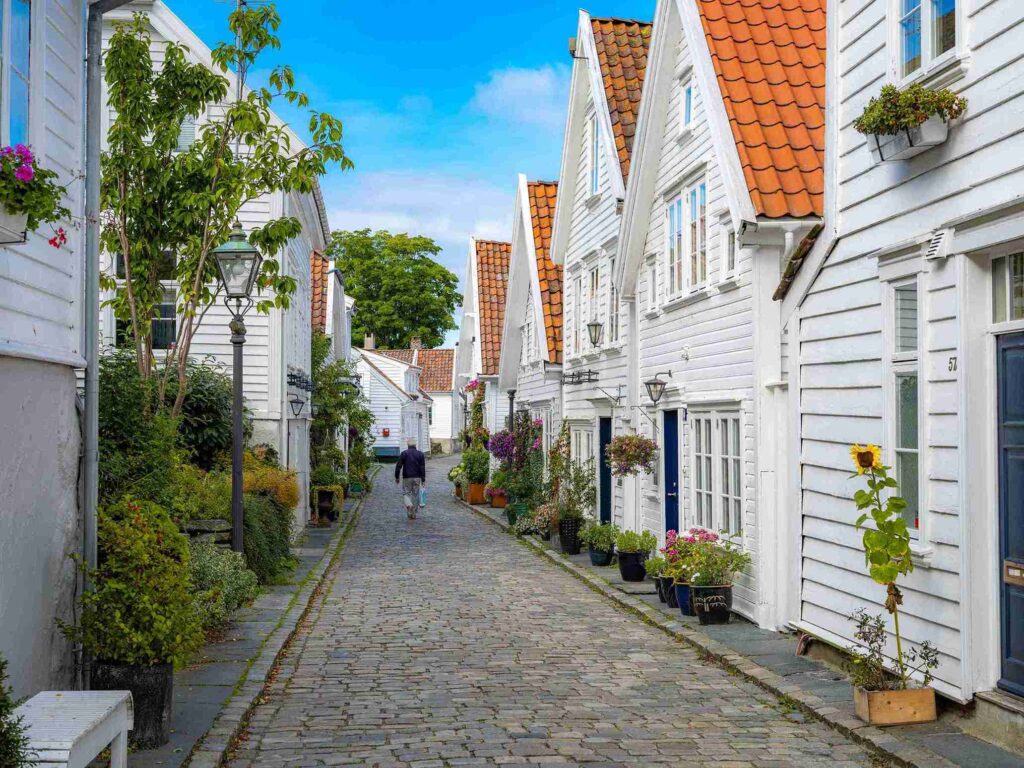Stavanger, Norway – Travel Tips
Category
Categories
Popular Articles

## Overview of the Destination
Stavanger, Norway, is a vibrant coastal city, renowned for its historical significance, thriving cultural scene, and breathtaking natural beauty. Dubbed as the ‘Oil Capital of Norway,’ Stavanger is known for its oil industry. But beyond this, it’s a haven of charming wooden houses, museums, and art galleries, rich history, and a gateway to Norway’s famous fjords. This amalgamation of old and new, natural and urban, makes Stavanger a place you’d want to tick off your travel bucket list.
## Best Time to Visit
The best time to visit Stavanger is from June to August, which is summertime in Norway. The temperatures are pleasant, ranging between 12 to 20 degrees Celsius, and the city is in full bloom with various festivals and activities, like the Stavanger Wine Festival and Gladmat Food Festival.
But you can opt for the shoulder seasons (May and September) for fewer crowds, cheaper accommodation, and still relatively good weather. Winters are cold with shorter daylight hours, which are ideal for experiencing Norway’s stunning Northern Lights.
## Climate & What to Pack
Stavanger’s climate is classified as temperate oceanic, with cool-to-warm summers and mild winters. Rain is common throughout the year. Summer travelers should pack lightweight clothing, comfortable hiking shoes, a light jacket or cardigan for the cooler evenings, sunblock, and a hat. Winter visitors will want warm clothing, such as thermal layers, waterproof boots, scarves, gloves, and hats. Don’t forget to pack a waterproof jacket or umbrella.
## Getting There
Stavanger Sola Airport is the nearest major airport, located about 14 km from the city center. The Flybussen airport bus offers transportation to Stavanger city center, taking around 30 minutes.
For travelers outside the Schengen area, a valid tourist visa is required to travel to Norway. Check Norway’s official immigration website to know the visa requirements for your country.
## Getting Around Locally
Stavanger is a compact city, making it easy to explore on foot. Complementing the walkability is an efficient public transport system that includes buses and ferries. Taxis and rideshares, like Uber, are widely available but can be expensive. You can also rent a bike or a scooter for a more personal exploration experience.
## Safety Tips
Stavanger, like most of Norway, is generally safe with low crime rates. However, common sense precautions apply. Avoid walking alone at night in less populated areas, and always keep an eye on your belongings. Norwegians are known for their polite demeanor, so it’s important to respect their culture and customs when visiting.
## Top Things to Do & See
No trip to Stavanger is complete without visiting the iconic Pulpit Rock, one of the world’s most spectacular viewpoints. Delve into Norway’s oil industry at the Norwegian Petroleum Museum. Wander around Gamle Stavanger (Old Stavanger), home to a collection of preserved wooden houses. For art enthusiasts, the Stavanger Art Museum is a must-see. And if you’re adventurous, take a fjord cruise or go on a glacier hiking adventure.
## Where to Stay
Stavanger offers a range of accommodation options. For luxury, stay at the Radisson Blu Atlantic Hotel or Clarion Hotel Stavanger. Mid-range travelers can opt for Thon Hotel Maritim or Comfort Hotel Square. Budget travelers and backpackers will find Stavanger Bed & Breakfast or Stavanger Vandrerhjem a good option. For a local vibe, consider staying in Gamle Stavanger.
## Food & Local Cuisine
Embark on a culinary journey in Stavanger. Try ‘Raspeballer,’ a potato dumpling dish, or ‘Klippfisk,’ dried and salted cod. For fine dining, check out restaurants like RE-NAA or Sabi Omakase. For street food, check out the stalls at the local food markets like the Stavanger Fish Market.
## Cultural & Practical Tips
Norwegian Kroner (NOK) is the official currency, and the official language is Norwegian, though English is widely understood. Tipping is usually included in the bill, but it’s common to round up to the nearest ten. Plugs are type F, and the standard voltage is 230 V. Most places offer free Wi-Fi.
## Sustainable or Responsible Travel Tips
Respect the natural environment, don’t litter, and consider using environmentally-friendly products. Opt for public transport or walking when exploring. Consider supporting local businesses by buying local produce and shopping.
## Personal Travel Tip
For a first-time visitor, my extra tip would be to immerse yourself in the Norwegian way of life. Don’t just take a photo of the stunning scenery; go on a hike, eat local food, stroll around the city, and interact with locals. In Stavanger, the beauty is not just in the places you’ll see but also in the experiences you’ll have. Enjoy your trip!










